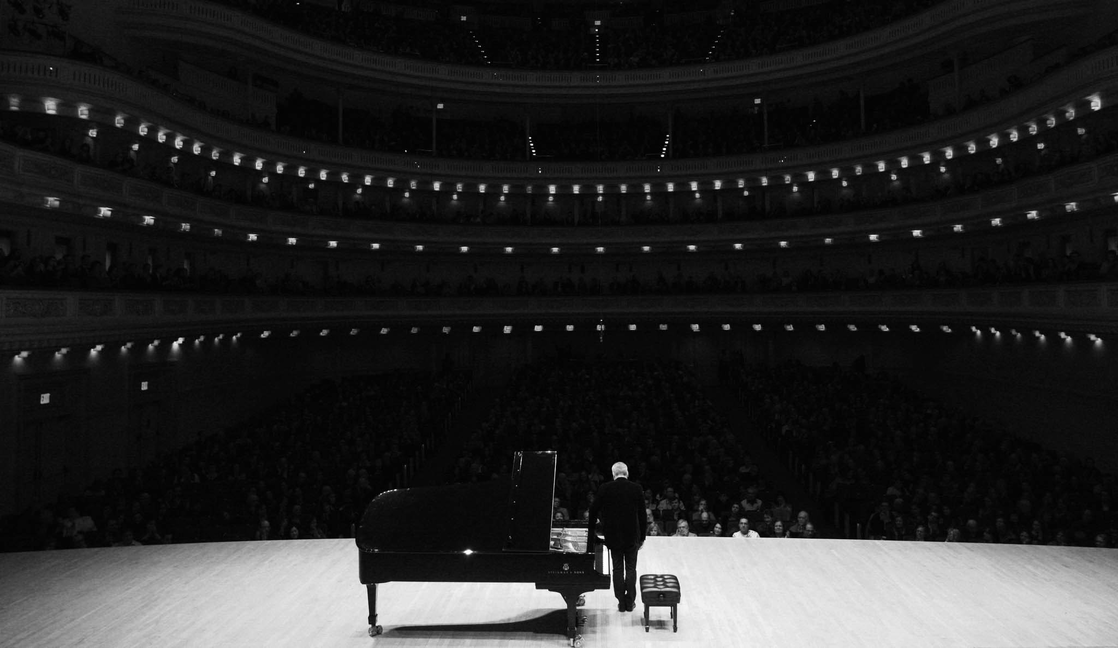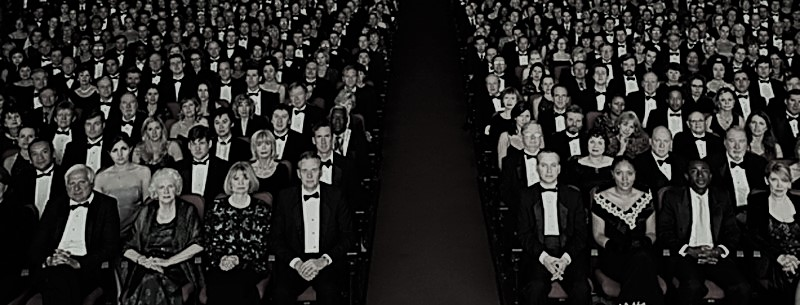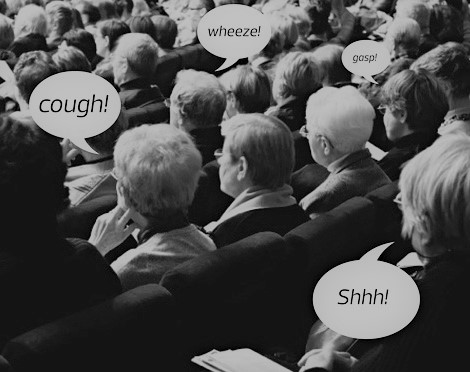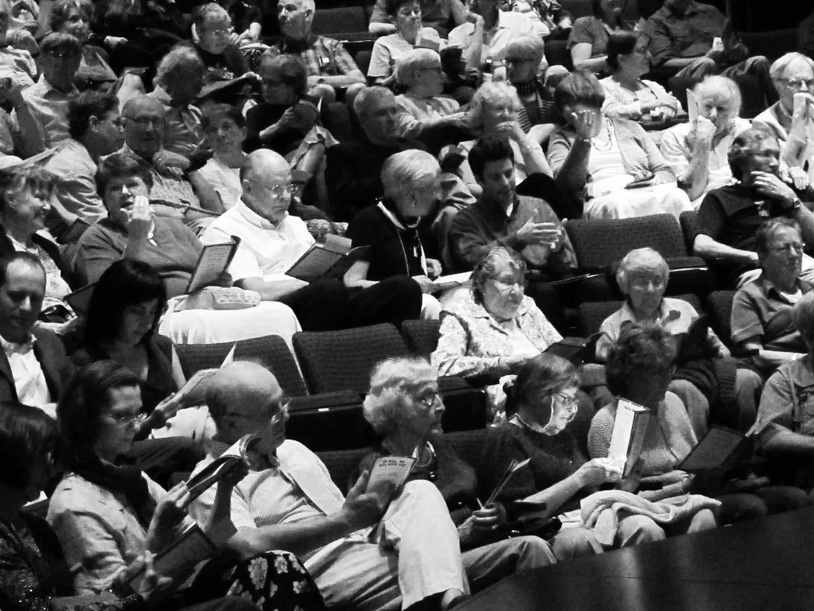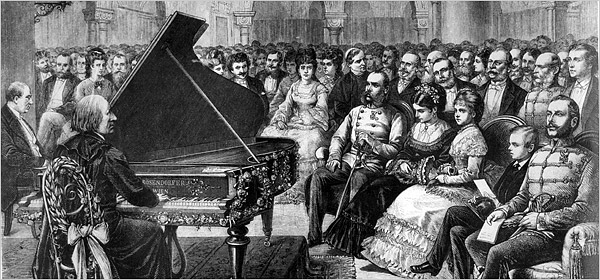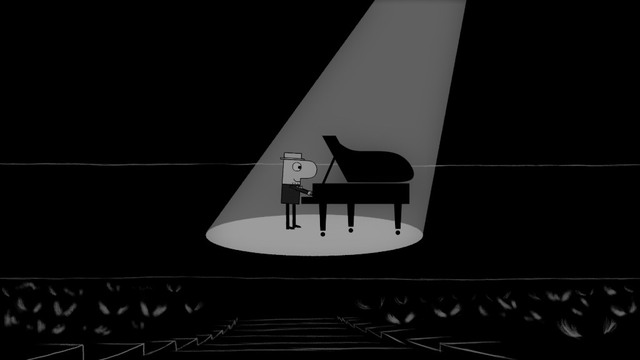factors conditioned by the venue
In this section, I will provide a general overview of the factors that can influence a performance that are conditioned by the venue. This overview is important, because it will later provide the basis for identifying the demands and opportunities presented by specific venues so that I can then begin to construct venue-appropriate interpretations. It should be noted that I haven't included the limitations/affordances of the instruments pianists in particular tend to encounter in various venues. This is because: a) in general pianists are already quite attuned to making interpretive adjustments according to the instruments they encounter onstage; and b) because the focus of my research is limited to the properties of a given performance space.
distance between performer and audience
The physical distance between the audience and performer in traditional concert halls creates a psychological barrier that divides the space into two distinct and separate worlds: the world of the performer and the world of the audience (Markusen and Brown, 848 - 849). This typically large distance influences the experience of hearing and playing music in this setting; reinforcing a feeling of one-way communication from the player and the seemingly passive and invisible role of the listener. An extreme example of this distance is experienced when listening to a recording of a performance. The performer has no way of receiving a response from the audience and the listener has no way of influencing the performance. On the other hand, in venues where this distance is very small the experience can be very intense for performers and audiences alike: the audience can easily disturb the performer, and they can very much feel each other’s presence with all of their senses—for better or worse.
profile of the audience
Different locations attract different kinds of listeners. They act in different ways and understand music differently. Typical attendees of traditional classical concerts series, events usually organized by large cultural centers, tend to be above 50 years old and highly educated (Moss, 2007), while alternative venues can attract a younger and more diverse group of listeners. Open-air concerts for example can engage passing listeners from very diverse demographics and social statuses. Since artists are always looking for new audiences, alternative venues can provide them with the new opportunities they seek.
level of attention
Most classical music, as we are accustomed to playing and hearing it today, requires a high level of attention. Traditional concert halls are designed so that the performer is the center of attention: the audience sits very still and quietly, and their focus is entirely on the stage. On the other hand, the attention of an audience in a music club is much more dispersed, and the music is perceived amidst comments from friends, the clinking of glasses and ringing of phones, and the constant coming-and-going of those in attendance. The lack of diversion in concert hall can however become its own undoing, like when listeners lose focus and fall asleep for example, or when they become lost in their own thoughts. Performers also often report feeling high levels of stress and pressure when all eyes and ears are focused upon them and little else.
level of background noise
Aural feedback is how musicians typically respond to the effect of their performances. Here I am referring to both an audience's unconscious noises (breathing, snoring, the shuffling of program notes) as well as their conscious noises (applause, gasps, sounds of disapproval, calls for an encore). Audiences from different countries in my experience produce very different noises—both in quantity and in quality. In Slovenia for example, the audience is usually very quiet and offers very long but soft bouts of applause, whereas in Italy it is common to hear a lot of talking (whispering) and moving around during concerts, and explosive but relatively short bursts of applause. In both scenarios however, I felt as though the audience was concentrating on and appreciating my performance. Nevertheless, the amount of noise in a given performance space is also conditioned by the venue. Acoustics, social setting, and the architecture of a hall can all influence the aural feedback performers receive while performing. In my opinion, the level of this noise is one of the most important factors that a performer has to take into account when deciding on the strategy of a given performance.
amount of social interaction within the audience
While the architecture of a traditional concert hall (placement, orientation, and fixed nature of the seating) discourages social interaction of any sort during a performance, there are venues that actively encourage it. This can influence the atmosphere of a concert as well as how both audience and performer listen. Social interactions in the context of classical concerts do not involve loud conversations about unrelated topics, but rather more visual communication – the ways audience members show each other how they feel about a performance via the exchanging of looks and body language for example—and more subtle sounds like approving or disapproving whispers and murmurs. Social interactions after concerts or during intermissions can also influence the way people perceive concert events. Some venues, like private homes for example, combine an artistic experience with an intimate social gathering.
amount of social interactions between audience and performer
This parameter includes interactions both during and after the performance. Some venues encourage verbal communication from performers as part of the concert experience (like pre-concert talks for example), while others encourage more distance and actively limit such interactions. This creates various possibilities for the audience and the performer. The performer can create a more spiritual or transcendent musical listening experience and maintain his or her social distance from the audience, or they can choose to emphasize the humanity of their craft, skill, and knowledge by explaining their opinions and conception of the works they perform, which often encourages more empathy from audiences.
lighting
The amount and quality of light onstage can have a major effect on the atmosphere of a performance. Since Wagner’s Festspielhaus in Bayreuth, the tendency has been to highlight the stage and to leave the audience in darkness. This too creates separate and distinct worlds, where the performer takes an active role and audience a more passive one (Kaye, 63). Some venues also prefer to use natural light, with others use either very dim or very strong and artificial light. Each of these situations also affects the relationships between participants at a concert event.
acoustics
The acoustic environment of a given venue can help the performer to establish their dominance, to grab the audience's attention, and it can also enable the audience to hear the performance in the most clear and beautiful manner possible. Acoustics can be an inspiration for the performer as much as a distraction. In any case, performers always adjust their way of playing to take into account the acoustics of a given venue (Ashley, 2005), and it is perhaps the only venue-specific parameter that gets discussed and practiced during the musical training process. For performers however, understanding the specific acoustical properties of a given space can be extraordinarily tricky, because what they hear onstage is often completely different to what is heard by the audience. For this reason, many musicians spend a lifetime developing a 'third ear': being able to put oneself aurally in the position of the listener.
